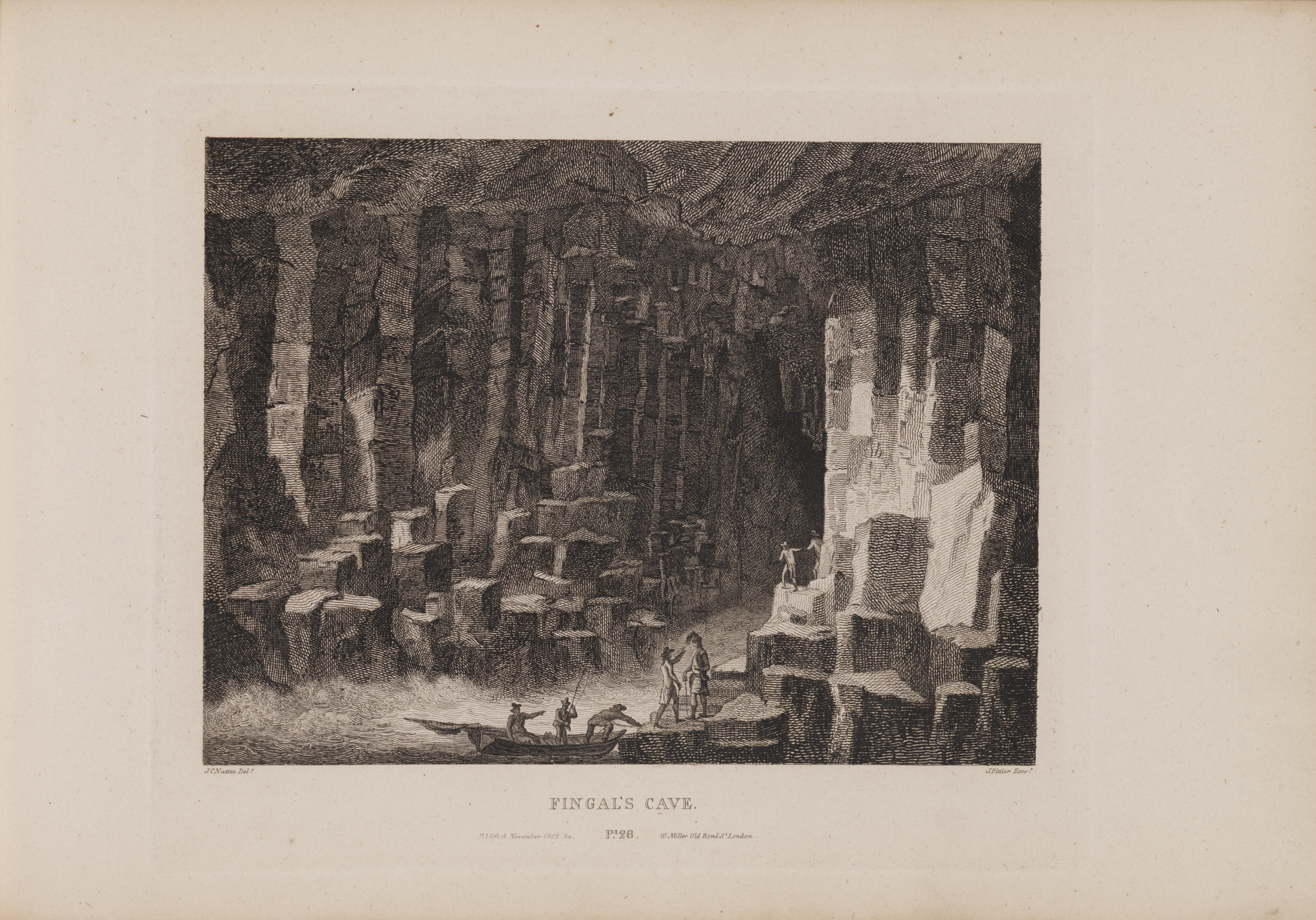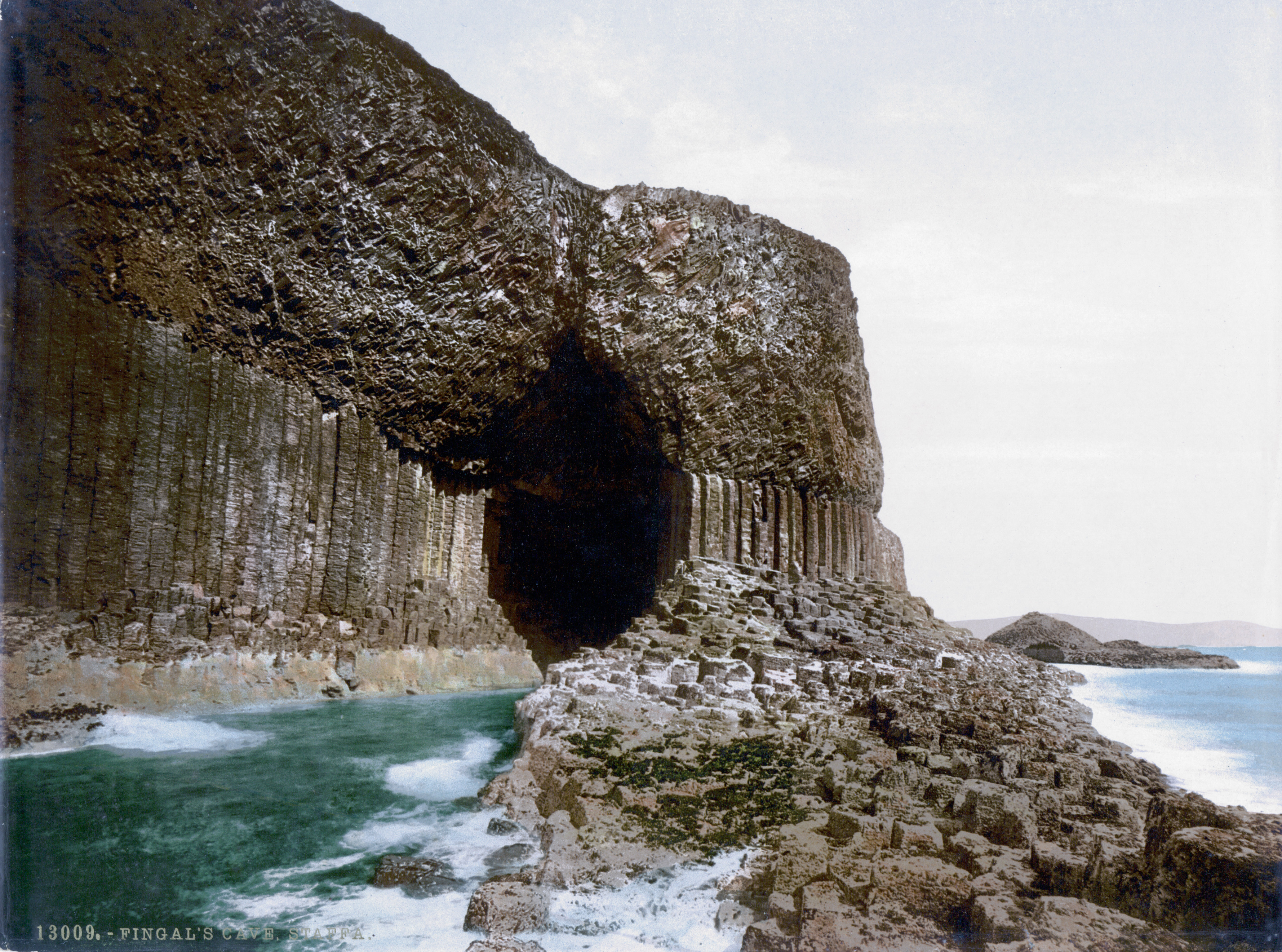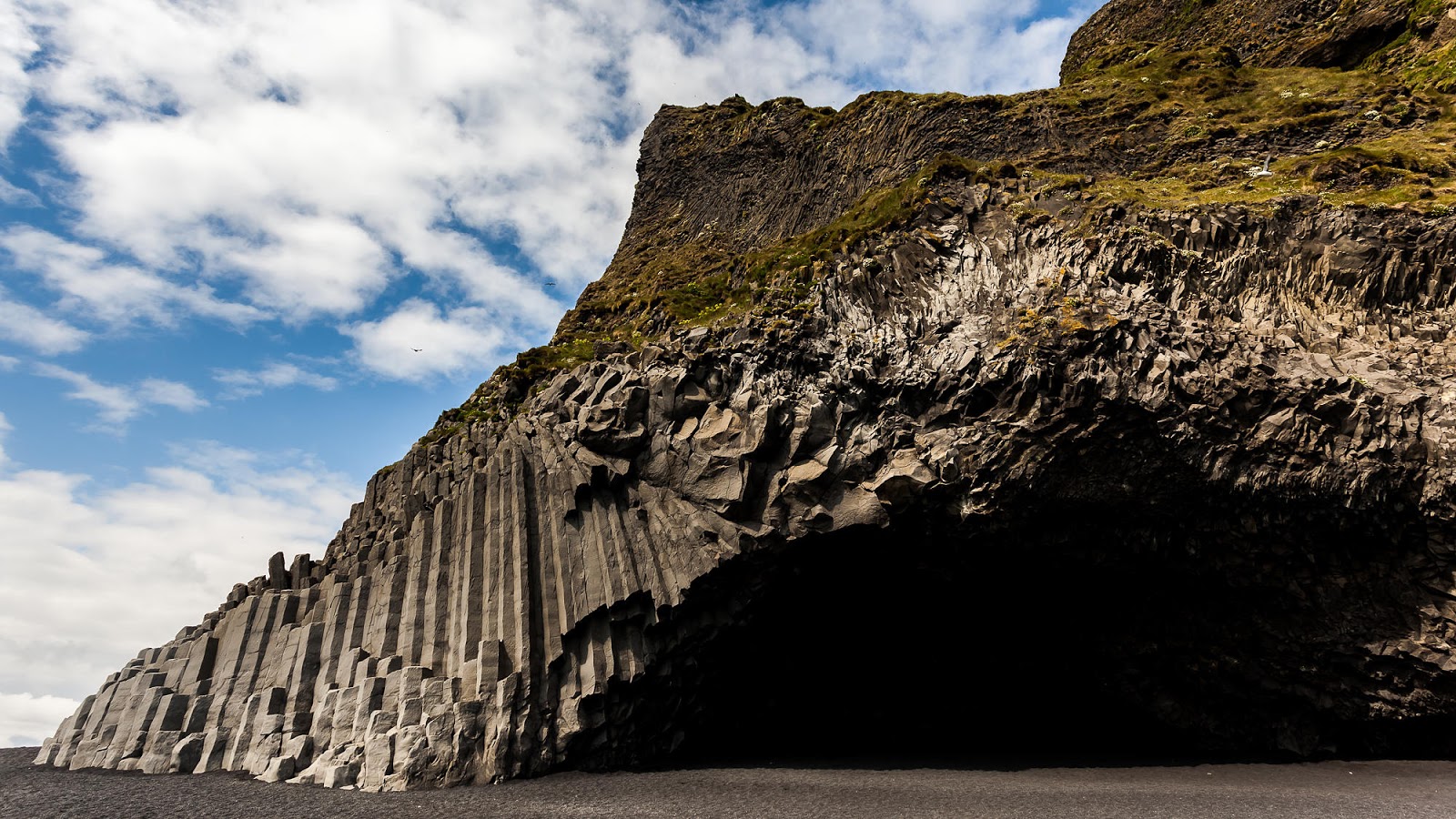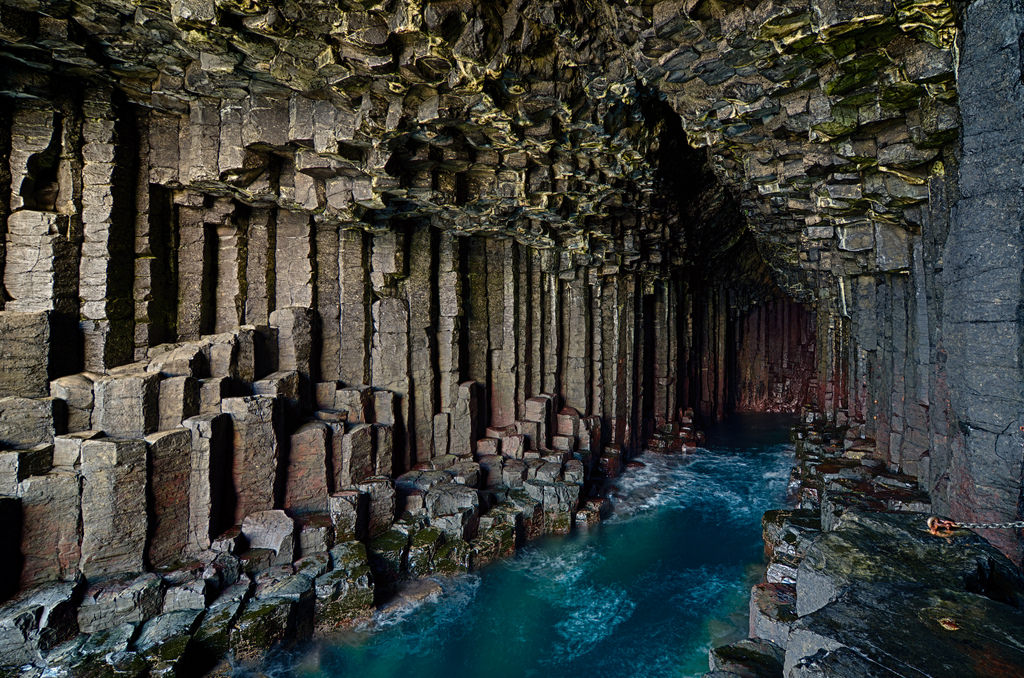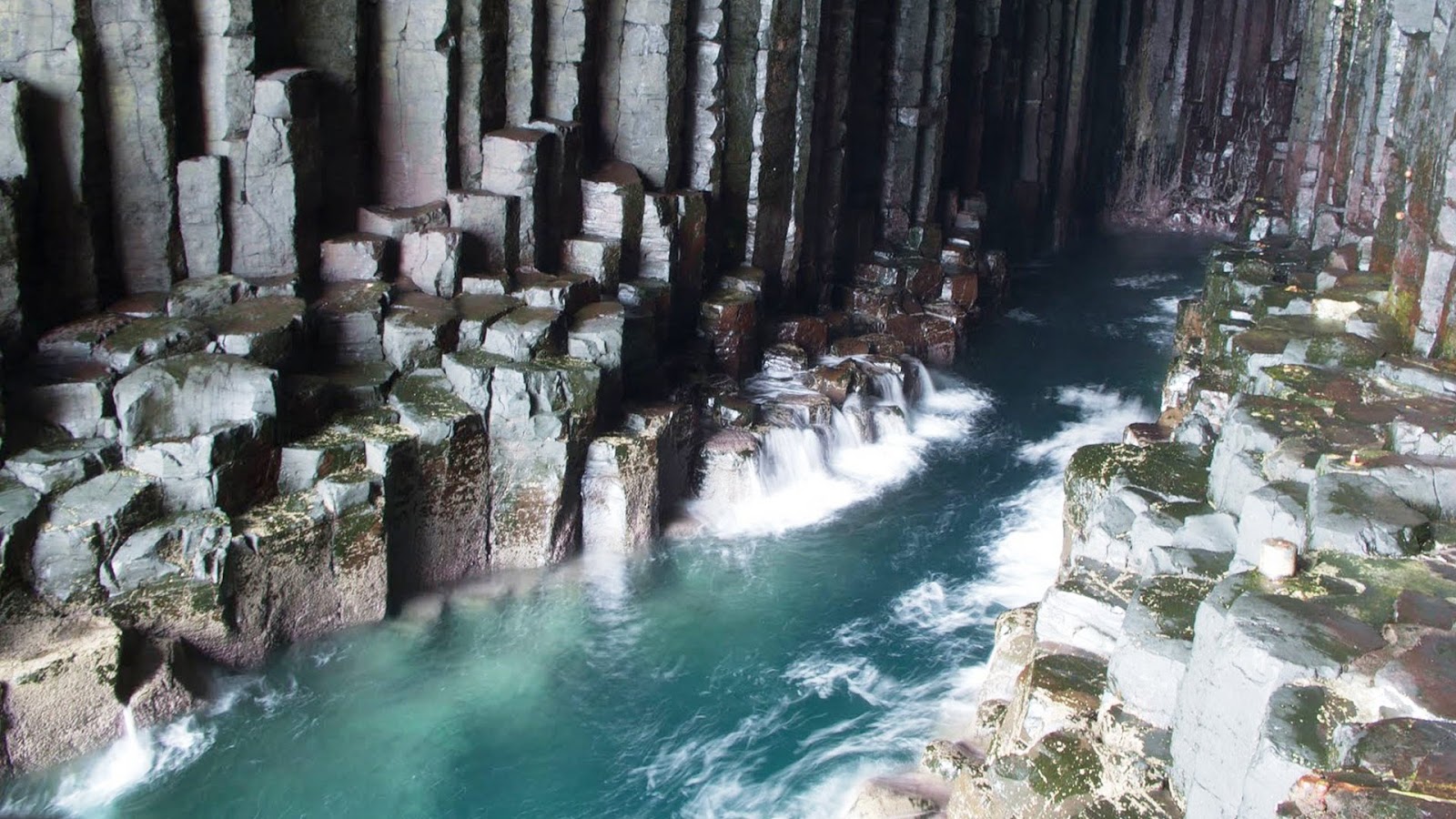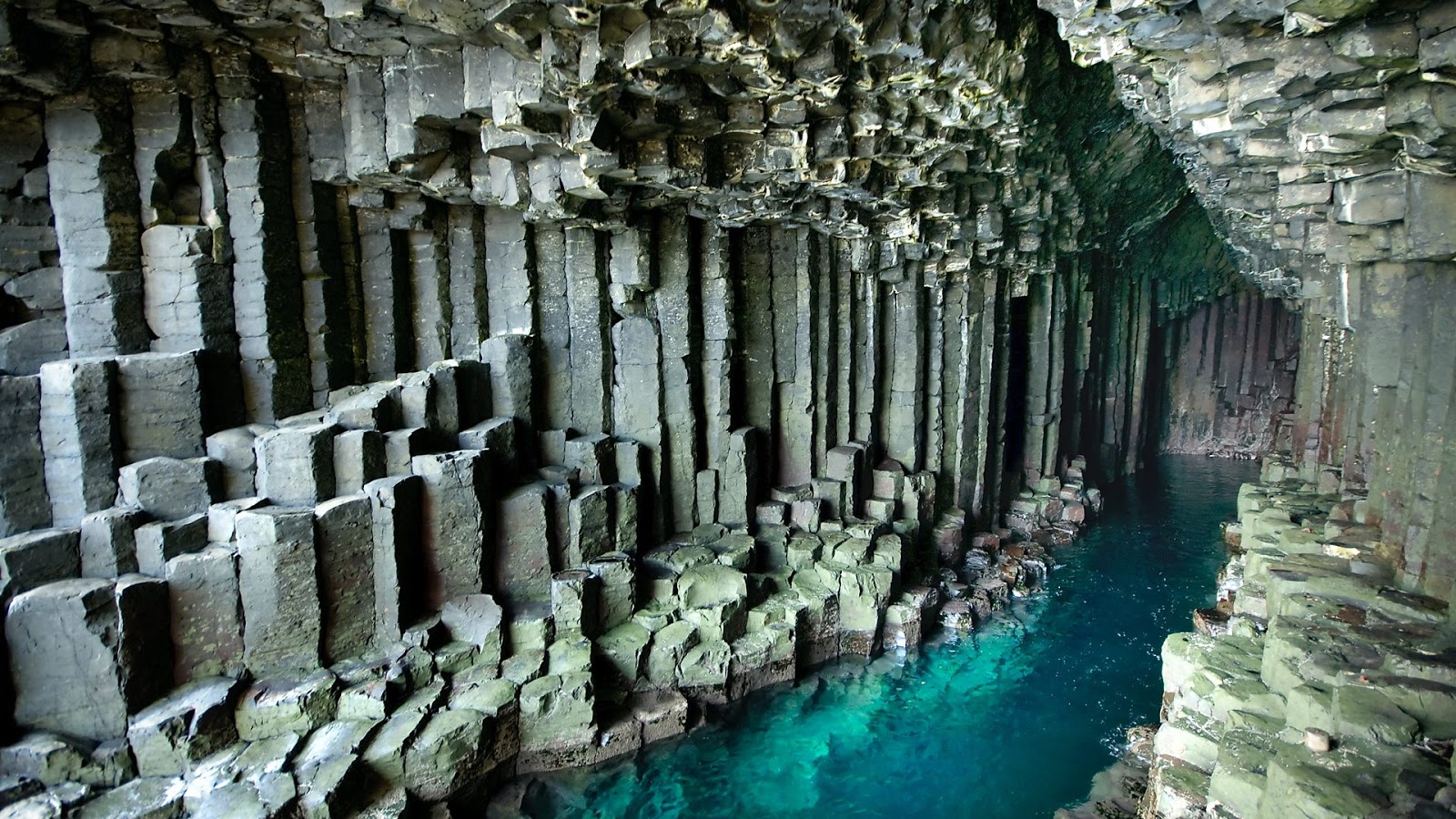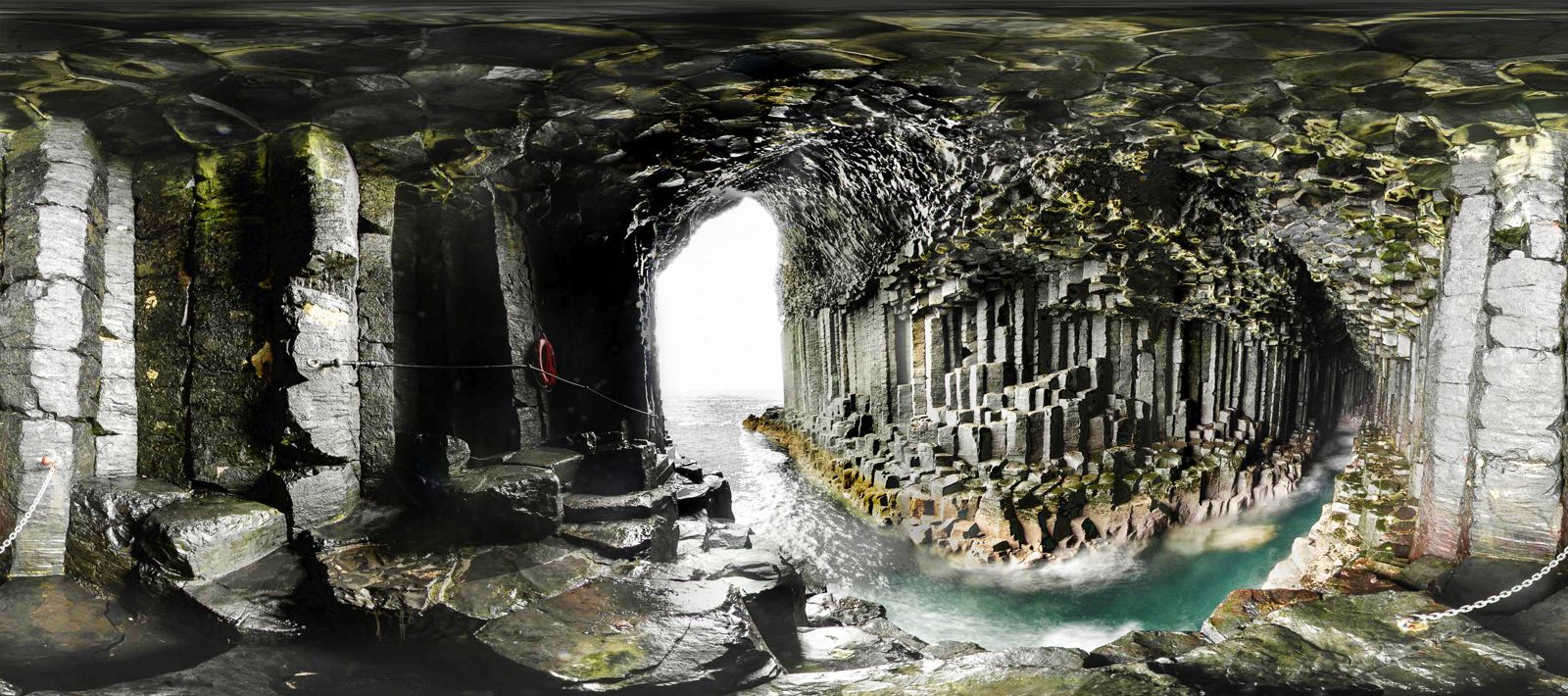|
Caverns of the World |
||
Fingal's Cave, Island of Staffa, Scotland
|
||
Fingal's Cave
Fingal's
Cave is a sea cave on the uninhabited island of Staffa, in the Inner
Hebrides of Scotland, known for its natural acoustics. The National
Trust for Scotland owns the cave as part of a National Nature Reserve.
It became known as Fingal's Cave after the eponymous hero of an epic
poem by 18th-century Scots poet-historian James Macpherson.
Formation Fingal's Cave is formed entirely from hexagonally jointed basalt columns within a Paleocene lava flow, similar in structure to the Giant's Causeway in Northern Ireland and those of nearby Ulva. In all these cases, cooling on the upper and lower surfaces of the solidified lava resulted in contraction and fracturing, starting in a blocky tetragonal pattern and transitioning to a regular hexagonal fracture pattern with fractures perpendicular to the cooling surfaces. As cooling continued these cracks gradually extended toward the centre of the flow, forming the long hexagonal columns we see in the wave-eroded cross-section today. Similar hexagonal fracture patterns are found in desiccation cracks in mud where contraction is due to loss of water instead of cooling. History Little is known of the early history of Staffa, although the Swiss town of Stšfa on Lake Zurich was named after the island by a monk from nearby Iona. Part of the Ulva estate of the Clan MacQuarrie from an early date until 1777, the cave was brought to the attention of the English-speaking world by 18th-century naturalist Sir Joseph Banks in 1772. It became known as Fingal's Cave after the eponymous hero of an epic poem by 18th century Scots poet-historian James Macpherson. It formed part of his Ossian cycle of poems claimed to have been based on old Scottish Gaelic poems. In Irish mythology, the hero Fingal is known as Fionn mac Cumhaill, and it is suggested that Macpherson rendered the name as Fingal (meaning "white stranger") through a misapprehension of the name which in old Gaelic would appear as Finn. The legend of the Giant's Causeway has Fionn or Finn building the causeway between Ireland and Scotland.
|
||
Fingalís Cave on the island of Staffa, showing the columnar basalt that makes up the exposed base of the island. These columns were caused by the prehistoric lava flow that formed the basalt crystallizing as it cooled. The stones are similar to those on the Giantís Causeway in Northern Ireland, and apparently ďFingalĒ refers to the same figure known as Fionn mac Cumhaill, or Finn MacCool, in Irish mythology, who was the builder of the Giantís Causeway in the legends about that place. The noise of the ocean in the cave makes for some odd reverberations; I got only a hint of them myself, since the waves were relatively small when we were there. Those noises were the inspiration for Mendelssohnís The Hebrides, Op. 26 (Fingalís Cave Overture), which I hadnít heard prior to my visit but have since sought out. - Source |
||
|
||
|
||
|
||
Fingal's Cave - Source Learning Geology
|
||
| FAIR USE NOTICE: This page contains copyrighted material the use of which has not been specifically authorized by the copyright owner. Pegasus Research Consortium distributes this material without profit to those who have expressed a prior interest in receiving the included information for research and educational purposes. We believe this constitutes a fair use of any such copyrighted material as provided for in 17 U.S.C ß 107. If you wish to use copyrighted material from this site for purposes of your own that go beyond fair use, you must obtain permission from the copyright owner. | ||
|
|
